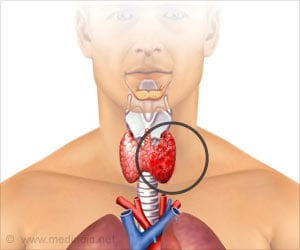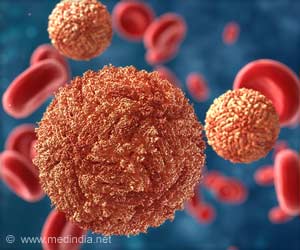A protein in the nucleus of breast cancer cells that plays a role in fueling the growth of aggressive tumors may be a good target for new drugs, reports a research

"This is validation of a new drug target for a subset of breast cancers that have poor treatment options," said the study's senior author, Donald McDonnell, PhD., chairman of the Duke Department of Pharmacology and Cancer Biology.
In about 75 percent of breast cancers, the growth of tumors is driven by estrogen. Current treatments for these tumors work by blocking the effects of the hormone.
But about 25 percent of breast cancers are not fueled by estrogen. Among the most common malignancies in this category are HER2-positive tumors, where human epidermal growth factor receptor 2 is in excess on the surface of tumor cells. Treatments have been developed to disable the activity of HER2 and impede tumor growth, but the tumors often grow resistant.
McDonnell and his team focused on a protein inside the nucleus of tumor cells that has a relationship with HER2. Known as estrogen-related receptor alpha (ERRα), the protein was identified in the 1980s and misleadingly dubbed an estrogen receptor. It is not; instead, it controls genes involved in energy metabolism.
But ERRα does appear to play a role in spurring tumor growth in breast cancers. Using a genomic analysis to profile 800 breast tumors, McDonnell's team identified a correlation between the activity of the protein and the aggressiveness of estrogen-negative malignancies.
Advertisement
The protein appears to ignite tumor growth after getting a signal from different hormone receptors. One trigger is HER2, the growth factor receptor, and another is IGF-1R, which binds to an insulin-like hormone. As a result, ERRα is active in all breast cancer tumors where either HER2 or IGF-1R is also active, a scenario that occurs most frequently in estrogen receptor negative cancers.
Advertisement
"There are a lot of proteins that play important roles in breast cancer pathogenesis, but disappointingly, the activity of only a few of these proteins can be inhibited by drugs," McDonnell said. "In contrast, it's relatively easy to interfere with ERRα's function. So instead of looking for the pathways that lead to ERRα activation, we can aim directly at the target ERRα. It doesn't matter what's upstream."
McDonnell said the new drug approach could be applied to colon, ovarian and other cancers, since ERRα is highly active in different malignancies.
"The initial excitement is we have found a target that seems to be important for estrogen-negative cancers," McDonnell said.
The research team is now investigating the reason why higher ERRα activity results in more aggressive breast cancer tumors. The researchers are also helping develop new drugs to inhibit the activity of this receptor.
Source-Eurekalert















